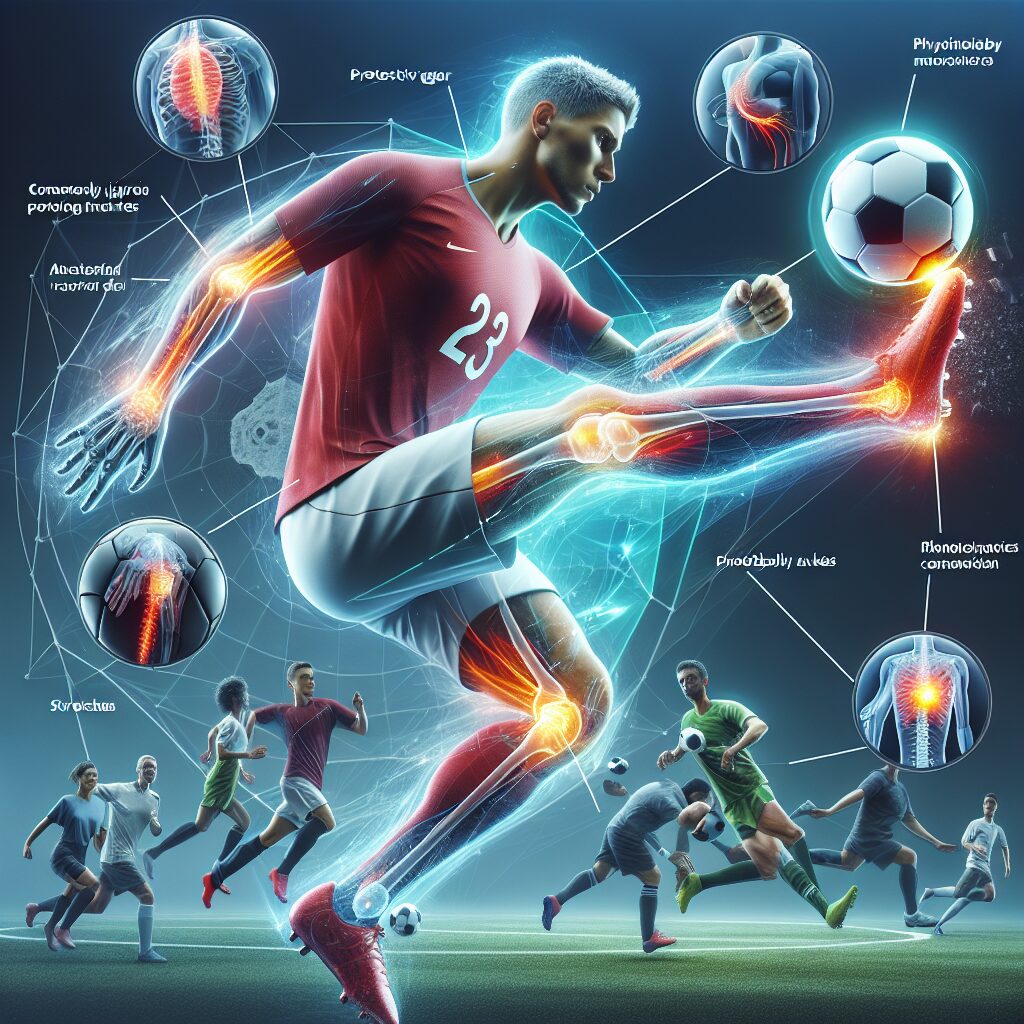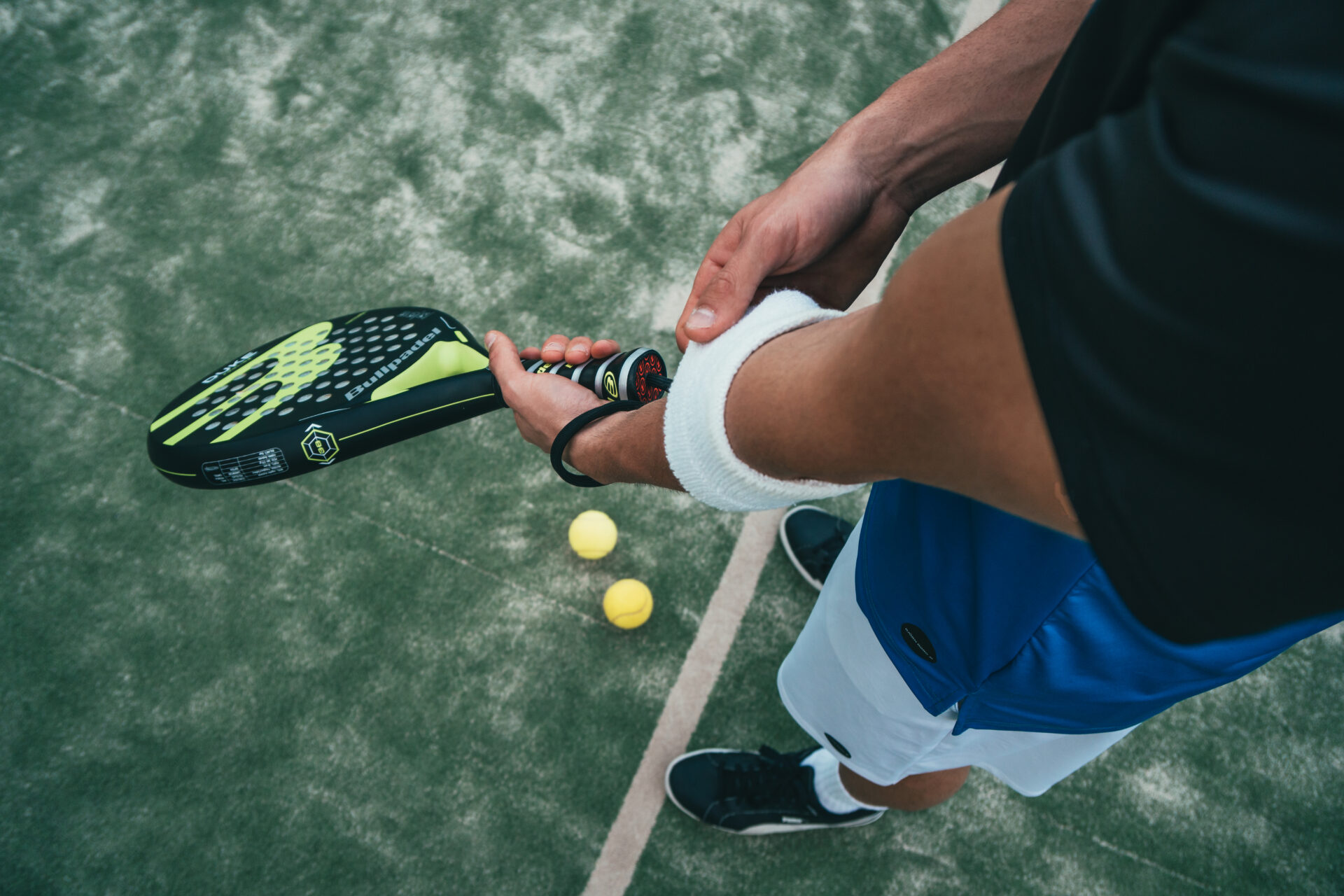Common Ball Injuries: Prevention and Recovery
From weekend warriors to professional athletes, ball sports have always been popular among people of all ages and skill levels. Whether it’s basketball, football, soccer, or tennis, these sports provide a great way to stay active and competitive. However, with the thrill of the game comes the risk of injuries, particularly ball-related ones. Understanding the common ball injuries, their prevention, and recovery methods are essential for both athletes and sports enthusiasts.
Ball injuries can range from minor sprains and strains to more serious fractures and ligament tears. For example, ankle sprains are one of the most common injuries in sports that involve a ball, often occurring when players make abrupt movements or change direction quickly. Another prevalent injury is ball-related concussions, which can have long-lasting effects on an athlete’s health and well-being. These injuries not only affect the physical aspect of the game but can also have psychological and emotional impacts on players.
In the following sections, we will delve into the key takeaways to help you prevent and recover from common ball injuries. First, we will explore effective strategies for injury prevention, including proper warm-up exercises, the use of protective gear, and maintaining good technique. Next, we will discuss essential recovery methods such as rest, rehabilitation exercises, and seeking professional medical advice. By implementing these strategies and gaining a deeper understanding of common ball injuries, you’ll be better equipped to stay healthy and continue enjoying your favorite ball sports at their fullest potential.
Key Takeaways
1. Proper warm-up and stretching before playing ball can help prevent injuries: Performing exercises that target the specific muscles used in ball sports, such as the hamstrings and quadriceps, can reduce the risk of strains and tears. Additionally, stretching the muscles and joints involved in ball movements can increase flexibility and prevent muscle imbalances.
2. Maintaining good technique and form during ball sports is crucial: Using proper body mechanics can minimize the strain on joints and muscles, reducing the likelihood of injuries. It is important to focus on correct posture, balance, and positioning to ensure the body is aligned and movements are executed with precision.
3. Protective gear can significantly reduce the risk of ball-related injuries: Wearing appropriate equipment, such as helmets, knee pads, shin guards, or elbow guards, can provide necessary support and cushioning. This protective gear absorbs impact and safeguards vulnerable areas, thus minimizing the chances of fractures, concussions, or other severe injuries.
4. Rest and recovery are essential for injury prevention and healing: Overuse injuries are common in ball sports, and allowing sufficient time for the body to recover between sessions or games is crucial. Adequate rest can help prevent overexertion and reduce the risk of chronic, repetitive strain injuries. Furthermore, seeking professional treatment and following a proper rehabilitation program are essential for a safe and effective recovery.
5. Listening to your body and seeking medical attention when needed is vital: Ignoring pain or discomfort during ball sports can lead to more severe injuries. Recognizing the signs of an injury and seeking medical advice promptly is crucial for preventing further damage. Consulting with a healthcare professional experienced in sports injuries can provide proper diagnosis, treatment, and guidance for a successful recovery.
What are the best ways to prevent and recover from common ball injuries?
Understanding Common Ball Injuries
Before delving into prevention and recovery techniques, it is crucial to understand the different types of common ball injuries that athletes may experience. Some of the most prevalent injuries include sprains, strains, contusions, fractures, and dislocations. These can occur in various parts of the body, such as the knees, ankles, wrists, shoulders, and elbows.
Preventing Ball Injuries
Prevention is always better than cure, especially when it comes to ball injuries. By taking appropriate precautions, athletes can significantly reduce the risk of getting injured. Here are some key steps to consider:
1. Warm-Up and Stretching:
Prior to engaging in any physical activity involving balls, it is essential to warm up the body and perform stretching exercises. This helps to loosen the muscles and increase flexibility, reducing the chances of injury.
2. Using Protective Gear:
Wearing appropriate protective gear is crucial when participating in ball sports. Depending on the sport, this may include helmets, knee pads, elbow pads, shin guards, or wrist guards. The right gear can absorb impact and provide essential support, minimizing the risk of injury.
3. Proper Technique and Form:
Learning and practicing the correct techniques for handling balls is essential in preventing injuries. Athletes should receive proper training and guidance from coaches or instructors to ensure they perform movements and maneuvers safely.
4. Maintaining Physical Fitness:
Regular exercise and conditioning are crucial in preventing ball injuries. By maintaining overall strength, flexibility, and endurance, athletes are better equipped to handle the physical demands of ball sports, reducing the likelihood of injury.
5. Rest and Recovery:
Allowing the body enough time to rest and recover between practices and games is vital in injury prevention. Overtraining can lead to fatigue and increased susceptibility to injuries. It is important to listen to the body’s signals and take rest days when needed.
Recovering from Ball Injuries
In the unfortunate event of sustaining a ball injury, prompt and proper recovery is crucial. Here are several strategies to aid in the recovery process:
1. Seek Medical Attention:
Regardless of the severity of the injury, it is important to consult a medical professional for an accurate diagnosis and appropriate treatment plan. They can provide specific guidance tailored to the injury and ensure proper healing.
2. Rest and Ice:
Resting the injured area and applying ice immediately can help reduce swelling and alleviate pain. Ice should be applied for 15-20 minutes at a time, with breaks in between. It is important to avoid applying ice directly to the skin to prevent ice burn.
3. Compression and Elevation:
Using compression bandages and elevating the injured area can further aid in reducing swelling and promoting blood flow. Compression should be snug but not too tight, and elevation should be above the heart whenever possible.
4. Rehabilitative Exercises:
Under the guidance of a healthcare professional, engaging in rehabilitative exercises can help restore function, flexibility, and strength to the injured area. These exercises should be performed gradually and within the recommended limitations to avoid further injury.
5. Gradual Return to Activity:
Once the injured area has healed and it is safe to do so, a gradual return to activity is recommended. Taking it slow and gradually increasing intensity and duration can help prevent re-injury and ensure a smooth recovery.
What are some important tips for preventing and recovering from common ball injuries?
- Always warm up and stretch before engaging in ball sports.
- Make sure to use appropriate protective gear.
- Learn and practice proper technique and form.
- Maintain physical fitness through regular exercise and conditioning.
- Listen to your body and rest when needed.
- Seek medical attention for any ball injuries.
- Apply ice and compress the injured area to reduce inflammation.
- Elevate the injured area to improve blood circulation.
- Follow rehabilitative exercises recommended by healthcare professionals.
- Gradually return to activity after complete recovery.
Frequently Asked Questions
What are common ball injuries?
Common ball injuries refer to any injuries or conditions that affect the testicles or scrotum. These injuries may include trauma, swelling, inflammation, torsion, or infection.
How can I prevent common ball injuries?
To prevent common ball injuries, it is important to wear protective gear particularly during sports or activities that may involve direct contact with the groin area. Additionally, warm-up exercises, proper stretching, and maintaining good overall health can reduce the risk of these injuries.
What should I do if I experience an injury to my testicles?
If you experience an injury to your testicles, it is crucial to seek immediate medical attention. Delay in treatment may lead to complications or long-term damage. Do not apply any home remedies without consulting a healthcare professional.
What are the signs of a testicular torsion?
The signs of a testicular torsion include sudden and severe pain in the testicles, swelling, redness, nausea, and vomiting. It is a medical emergency, and immediate surgical intervention is required to save the testicle.
Can wearing tight underwear cause ball injuries?
While wearing tight underwear may not directly cause ball injuries, it can increase the temperature of the testicles, which may have an impact on sperm production and fertility. It is recommended to wear properly fitted underwear that allows adequate airflow.
Are there any exercises to strengthen the muscles around the testicles?
There are no specific exercises to strengthen the muscles around the testicles. However, overall exercise and maintaining a healthy lifestyle can contribute to good reproductive health and potentially reduce the risk of injuries or conditions.
Can I use ice packs to relieve swelling after a ball injury?
Using ice packs can help reduce swelling after a ball injury. Apply an ice pack wrapped in a thin towel to the affected area for 15-20 minutes at a time, allowing breaks between applications. However, it is crucial to consult a healthcare professional for proper evaluation and guidance.
Can common ball injuries affect fertility?
Yes, common ball injuries have the potential to affect fertility. Severe injuries or conditions such as testicular torsion, infections, or trauma can lead to complications or damage to the testicles, impacting sperm production and fertility. Seeking prompt medical attention is essential.
Are there any specific age groups more prone to common ball injuries?
While common ball injuries can occur at any age, certain age groups may be more prone to them. Adolescents and young adults involved in sports or physical activities are at higher risk due to potential impact or trauma to the genital area.
Is self-diagnosis and treatment advisable for common ball injuries?
No, self-diagnosis and treatment are not advisable for common ball injuries. Prompt medical attention and proper evaluation are necessary to determine the severity of the injury or condition and provide appropriate treatment. Do not delay seeking professional medical advice.
Final Thoughts
Common ball injuries are a serious concern that should not be taken lightly. Prevention, through the use of protective gear and maintaining good overall health, is crucial to avoid such injuries. However, accidents may still occur, and timely medical attention is paramount to prevent complications and ensure proper recovery.
It is important to remember that self-diagnosis and treatment are not recommended in the case of common ball injuries. Consulting a healthcare professional is crucial to accurately assess the extent of the injury or condition and to receive proper treatment and guidance. Taking care of the testicles and seeking immediate medical attention when needed is vital for maintaining reproductive health and overall well-being.




